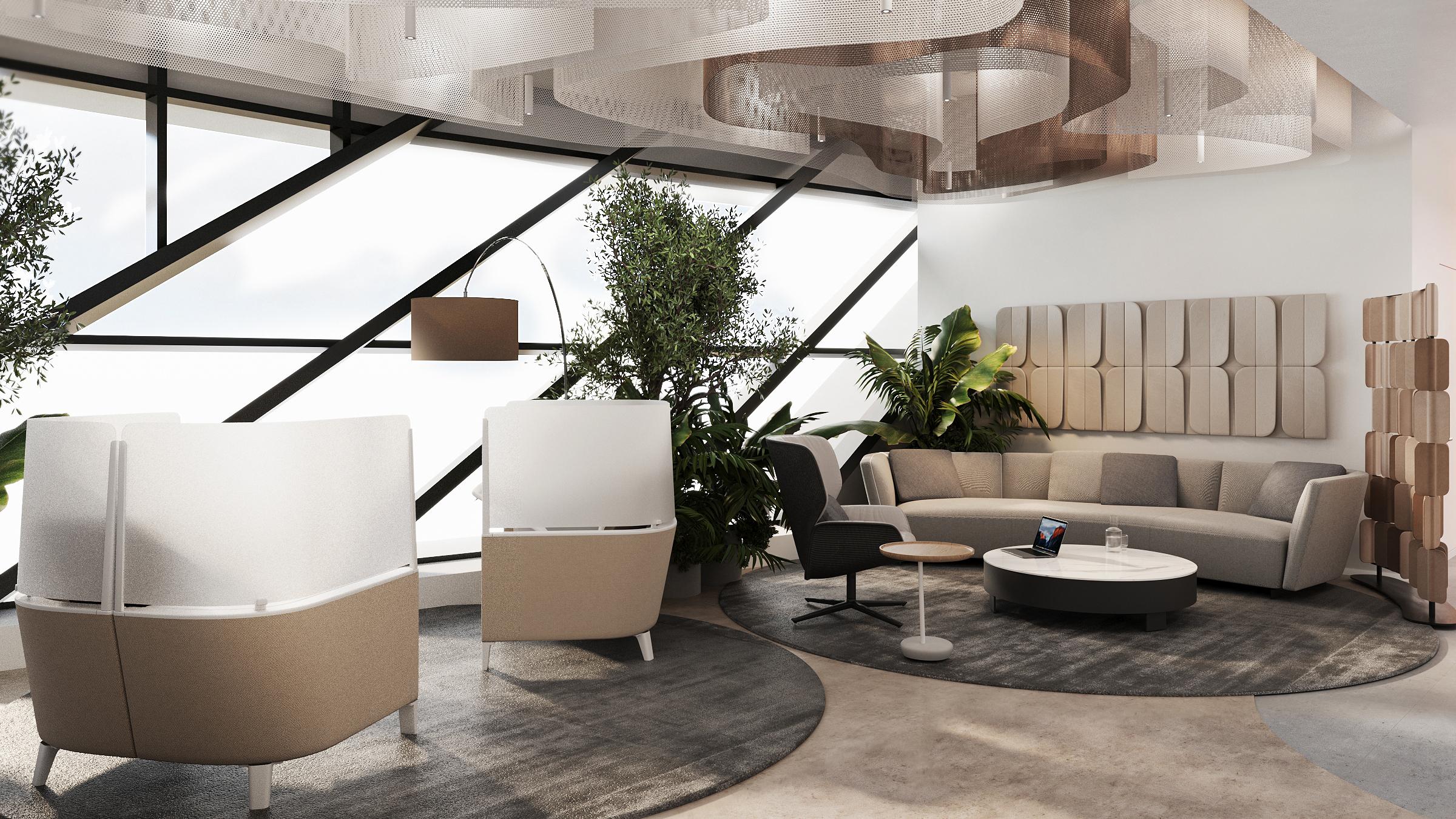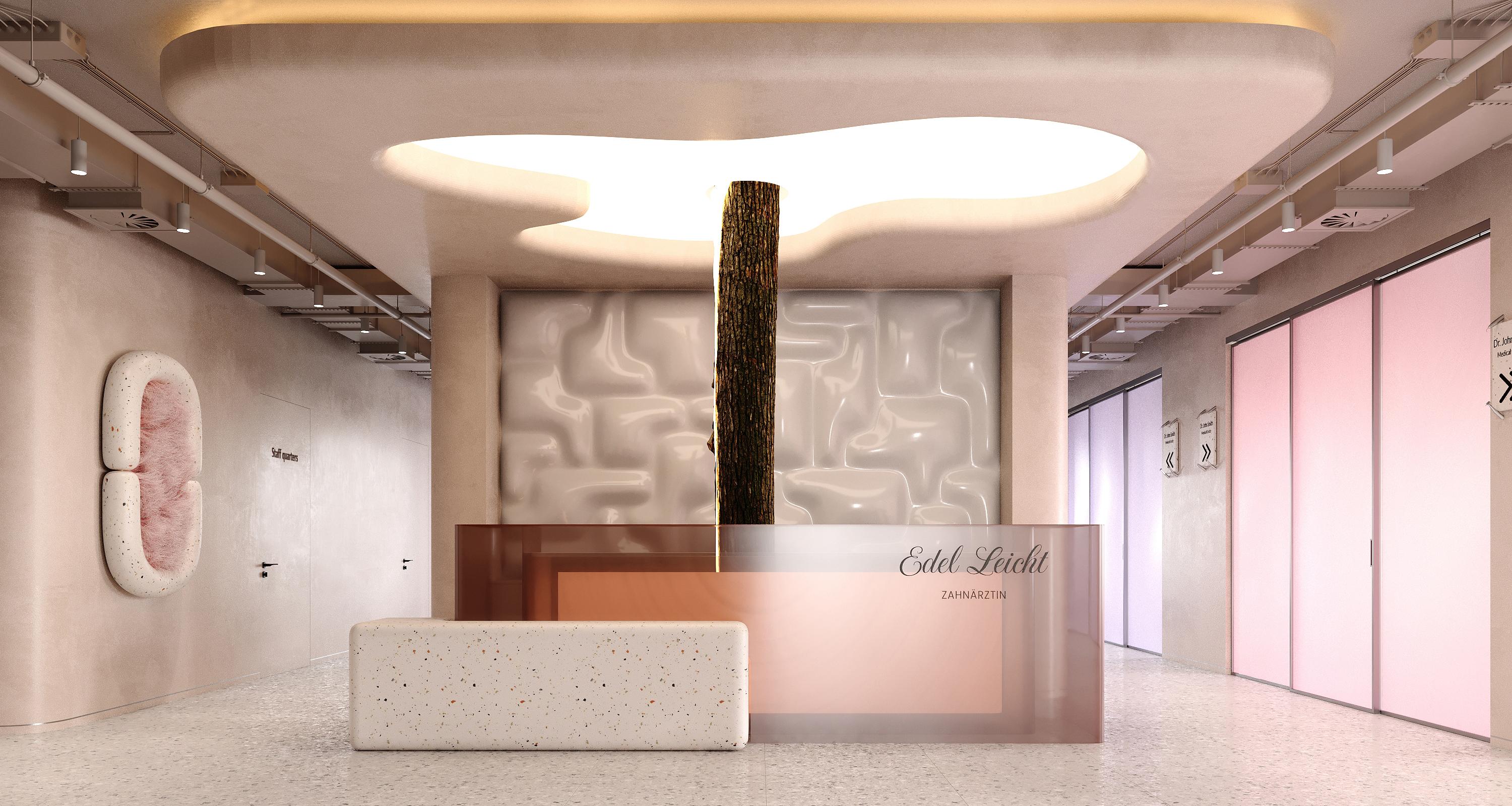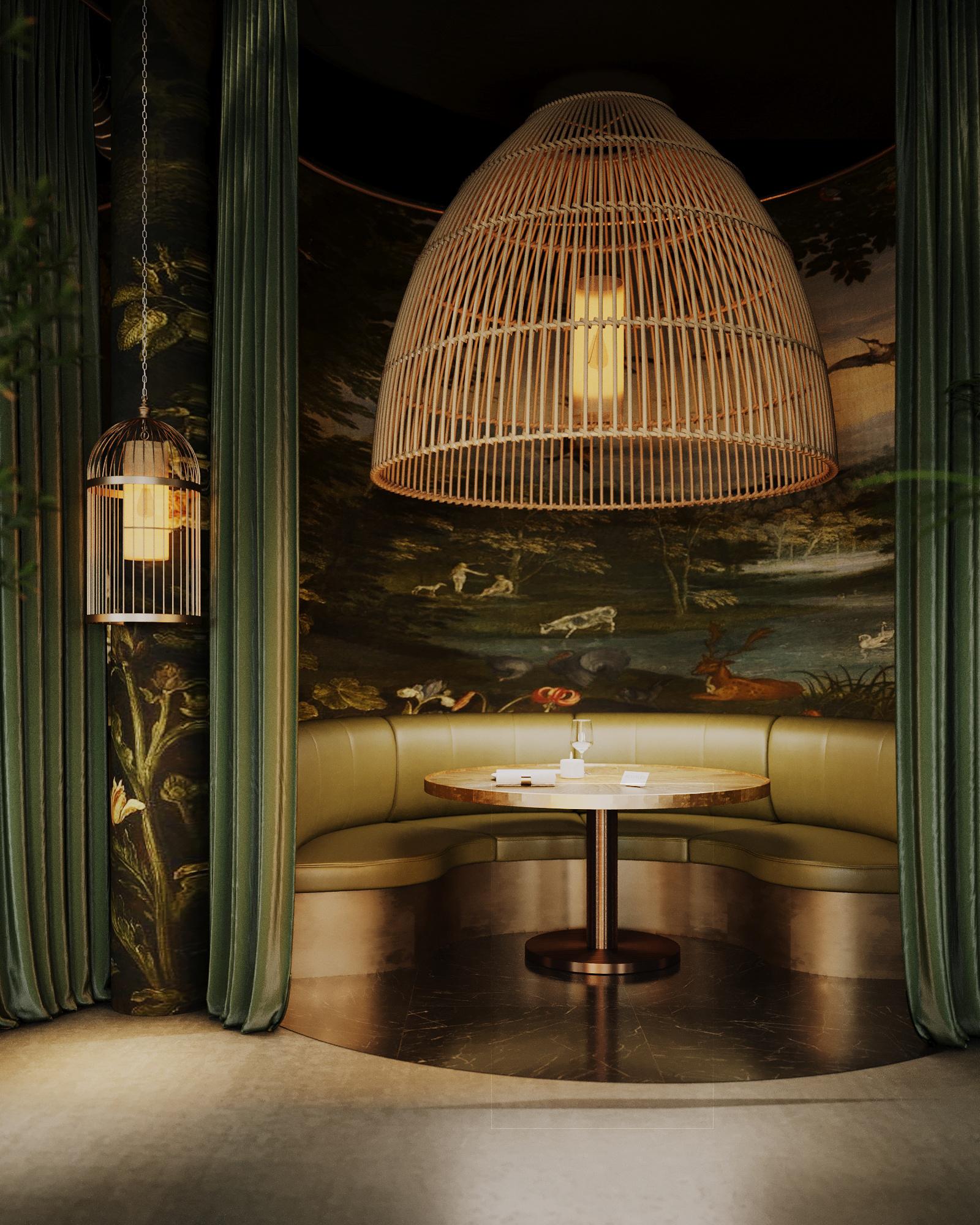Artificial intelligence, robots, new technologies that are hard to keep track of, rapid dopamine, crazy rhythms of life - this is the present of humanity. In such a reality, it is important to ground oneself, to pause, to dilute the daily routine with the natural and the human. Interior design, which aims to create human comfort, takes this aspect into account. That is why the global trend and tendency for this year and the next is to bring out the individuality and creativity inherent in the human being, to provide an outlet and detoxification from the saturation of technology, to create a balance.
Alesya Karnaukhova, CEO of ZIKZAK Architects, talks about the key trends of interior design in 2025, on the basis of which the philosophy of spaces will be formed.

Office interior. Design by ZIKZAK Architects
Consumer needs and expectations determine the textures, materials and colours of residential and commercial interiors. Let's highlight four major aesthetic trends that will have a significant impact on interior design this year.
A balance between nature and the latest technologies
This is about the harmonious coexistence of man and technology, the current rethinking of approaches to finding a balance between them. Interest is stimulating exploration beyond traditional boundaries, into areas that have not yet been explored.
As technology evolves, the merging of the physical and digital worlds is ushering in an era of innovation in design. Contemporary design contributes to solving environmental problems while emphasising authentic self-expression - creativity. Key features of the trend:
- Introduction of sustainable materials made from recycled materials - recycled glass and plastic. 3D printing of textiles - a clear example of the marriage of digital technology and traditional manufacturing.
- Transparent materials and reflective metal surfaces. Frosted glass and acrylic furniture are on trend. Glass blocks and stained glass windows are very popular.
- Combining soft pastels with bright accents as opposed to futuristic dark colours. Bright colours are a staple in interiors. Neutral tones - for large surfaces, walls and floors to balance the overall look and allow accents to shine through.
- Flooring with a dynamic design: flowing shapes, colour gradients, metallic splashes.
This aesthetic direction is ideal for innovative and creative spaces - offices, hotels.

Clinic interior. Design by ZIKZAK Architects
Emotional escapism
Here we embrace bold colours and playful shapes that create a sensual and dopamine-fueled experience. It's an opportunity to take a break from the digital universe by focusing on the mental. Joyful and beautiful interiors invite you to step away from the digital world and enjoy sensory decadence and emotional comfort. Offering a pleasurable multi-sensory experience, they combine nostalgia and childlike wonder, providing welcome comfort and mental rejuvenation.
Key features:
- Luxurious textures: plush velvets, fluffy fabrics.
- Playful forms with unexpected proportions.
- Deep, rich colours combined with neutral tones to balance the sensory impact.
- Sensually soft flooring with voluminous textures that beg to be touched, to feel their texture and softness.
Perfect for hotel, restaurant and commercial interiors, it offers an unforgettable experience.

Restaurant interior. Design by ZIKZAK Architects
Conscious Laconism
A fresh take on classic minimalism. Laconism with a twist and an emphasis on eco-consciousness. A focus on thoughtfulness and timelessness mixed with personal expression.
The trend responds to a culture of considered consumption and the value of versatile, durable pieces that promote resilience. This minimalist thinking is combined with personal expression to create unique, eccentric designs that add hedonism and individuality. An interior and its elements in this style is a long-term investment; it will be relevant for many years to come. Key features:
- Traditional shapes with quality materials, but reinterpreted: unexpected sizes and textures.
- Wavy lines, organic and sculptural shapes for a sense of dynamism and depth.
- Elaborate embellishments that add personality and breathe new life into recycled or repurposed elements.
- Timeless, neutral, minimalist tones that are versatile and soothing.
- A minimalist aesthetic where it is the shapes, concise patterns and textures that add character.
The perfect way to express your individuality in the home and reflect your brand identity in offices, flagship stores and hotels.

Office interior. Design by ZIKZAK Architects
Back to the roots, folk crafts
Honouring authenticity and craftsmanship with its imperfect forms and natural materials. Folklore emphasises community values and the craftsmanship of local producers, emphasising a return to roots. It is a deep dive into authenticity, where each interior object has its own unique story and soul. It is a call to reconnect people with the process of creation, bringing back the value of the handmade and individuality in an era of mass production. Key features:
- Natural materials with organic qualities: raw clay and wood, wrought iron elements, hand-woven textiles, author's ceramics.
- Intentional use of raw edges, the charm of unique imperfection, asymmetry, minimal finishes.
- Neutral, calm tones inspired by natural pigments.
- Ornaments, patterns and textures inspired by natural motifs: leaves, bark, moss, straw.
- Flooring with visible seams, uneven colouring, rough textures with a rural motif.
Ideal for homes, cafés and shops, leisure facilities.

Restaurant interiors. Design by ZIKZAK Architects
We have discussed 4 macro-trends, which set and will continue to set the vector of development of the entire design industry, forming not only aesthetic preferences, but the whole philosophy of space. Micro-trends follow from them. For example, the revival of soft floor coverings. During Milan Design Week, carpets were on display in many exhibition spaces. They were not only placed on the floor, but also creatively displayed as wall decorations, as works of art. Each of the micro-trends is a practical embodiment of global changes in human understanding of comfort, awareness and beauty.
The trends respond to the fundamental needs of modern man: the desire for balance, the search for emotional refuge, the desire to live consciously and feel connected to one's roots. It is important to recognise that these are not just aesthetic preferences, but a reflection of deeper social processes and changing lifestyles.
Interior Design 2025 is a manifesto of modern man, trying to find his way between technological progress and environmental responsibility, between global digitalisation and the need for authenticity, between the speed of change and the desire to create something lasting. And it is in this balance that a new image of space is born. A space where it is good to be human.
Read also:

